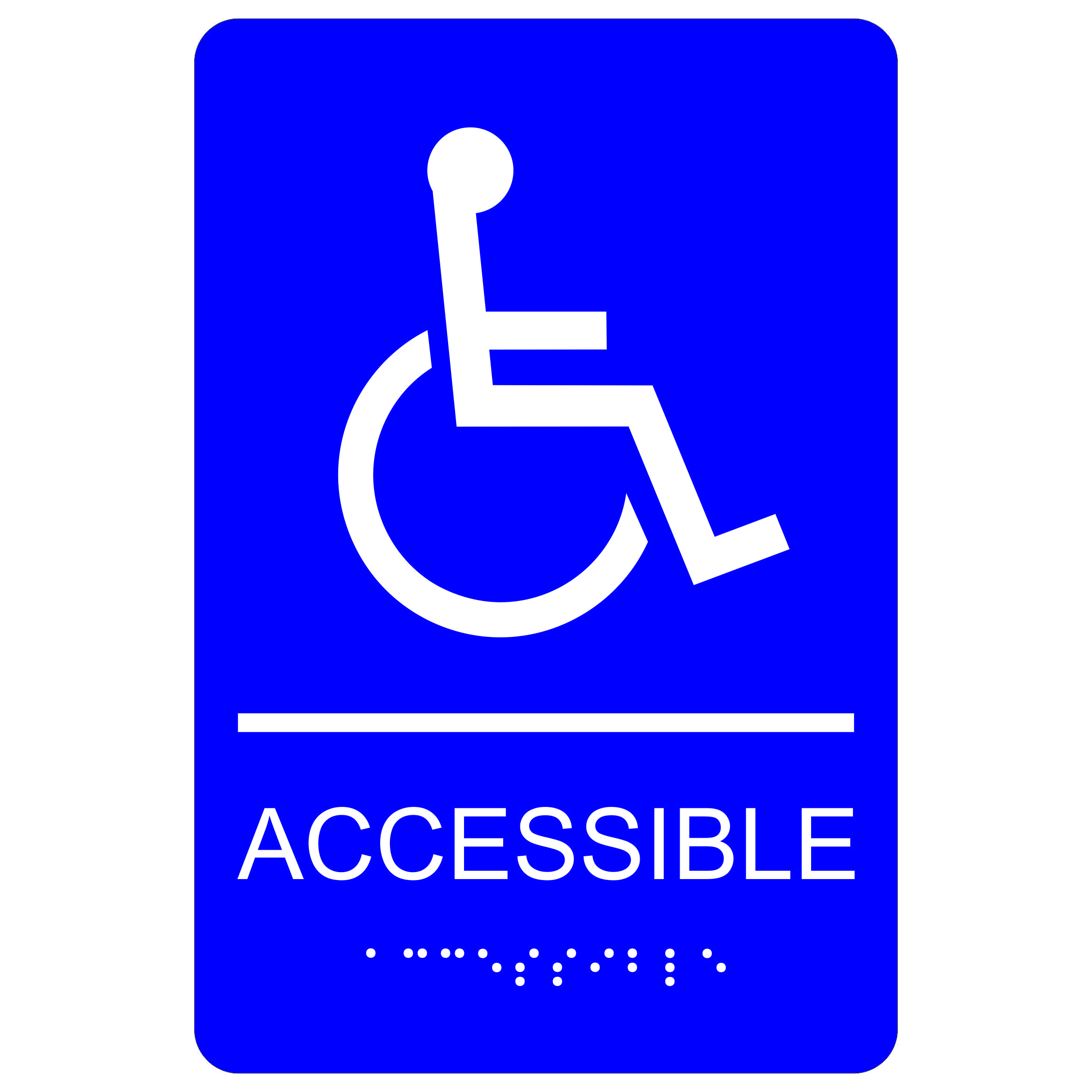Exactly How ADA Signs Enhance Availability for Everyone
Exactly How ADA Signs Enhance Availability for Everyone
Blog Article
Discovering the Trick Features of ADA Indications for Boosted Ease Of Access
In the world of ease of access, ADA signs offer as quiet yet effective allies, guaranteeing that rooms are inclusive and navigable for people with handicaps. By incorporating Braille and tactile elements, these signs damage obstacles for the aesthetically impaired, while high-contrast shade schemes and legible typefaces provide to diverse aesthetic demands.
Significance of ADA Compliance
Ensuring compliance with the Americans with Disabilities Act (ADA) is essential for cultivating inclusivity and equivalent gain access to in public areas and workplaces. The ADA, passed in 1990, mandates that all public facilities, companies, and transportation solutions accommodate individuals with handicaps, ensuring they appreciate the same civil liberties and opportunities as others. Conformity with ADA requirements not only meets lawful responsibilities yet also improves an organization's online reputation by showing its dedication to diversity and inclusivity.
One of the vital elements of ADA conformity is the execution of obtainable signage. ADA indicators are made to guarantee that individuals with specials needs can quickly browse through spaces and buildings.
In addition, sticking to ADA policies can minimize the threat of prospective penalties and lawful repercussions. Organizations that fail to abide by ADA standards may encounter claims or fines, which can be both financially challenging and harmful to their public picture. Therefore, ADA compliance is essential to fostering an equitable atmosphere for everyone.
Braille and Tactile Aspects
The unification of Braille and responsive elements into ADA signage embodies the principles of availability and inclusivity. It is usually positioned underneath the corresponding text on signs to guarantee that individuals can access the details without aesthetic help.
Responsive components extend past Braille and include raised signs and personalities. These components are designed to be discernible by touch, enabling individuals to determine space numbers, restrooms, departures, and various other vital locations. The ADA establishes certain guidelines pertaining to the size, spacing, and placement of these tactile components to enhance readability and guarantee uniformity across various settings.

High-Contrast Color Design
High-contrast color pattern play a pivotal function in improving the presence and readability of ADA signs for individuals with aesthetic disabilities. These schemes are crucial as they make best use of the difference in light reflectance between message and background, making sure that signs are quickly discernible, also from a range. The Americans with Disabilities Act (ADA) mandates using particular shade contrasts to suit those with limited vision, making it an important aspect of compliance.
The efficacy of high-contrast colors lies in their ability to attract attention in different lights conditions, including poorly lit settings and areas with glare. Generally, dark text on a light history or light text on a dark background is utilized to accomplish optimal comparison. Black text on a white or yellow history supplies a stark visual difference that aids in fast recognition read the full info here and understanding.

Legible Fonts and Text Size
When thinking about the layout of ADA signs, the selection of legible typefaces and ideal text dimension can not be overemphasized. The Americans with Disabilities Act (ADA) mandates that typefaces have to be sans-serif and not italic, oblique, script, extremely decorative, or of uncommon kind.
The size of the text also plays a crucial duty in ease of access. According to ADA standards, the minimum message elevation need to be 5/8 inch, and it should boost proportionally with checking out distance. This is especially important in public spaces where signage needs to be checked out promptly and accurately. Consistency in text dimension adds to a natural aesthetic experience, aiding individuals in navigating settings effectively.
Moreover, spacing between letters and lines is integral to readability. Appropriate spacing protects against characters from appearing crowded, enhancing readability. By sticking to these standards, developers can dramatically improve ease of access, ensuring that signage serves its designated function for all individuals, no matter their visual abilities.
Efficient Positioning Methods
Strategic placement of ADA signs is crucial for making the most of availability and making certain conformity with legal criteria. Properly located indications direct people with specials needs successfully, promoting navigation in public rooms. Trick considerations include height, visibility, and proximity. ADA guidelines stipulate that indications must be installed at an elevation between 48 to 60 inches from the ground to ensure they are within the line of sight for both standing and seated people. This typical elevation array that site is important for inclusivity, allowing mobility device users and people of differing elevations to accessibility info effortlessly.
Additionally, indicators have to be placed surrounding to the latch side of doors to permit very easy identification prior to entry. Uniformity in sign positioning throughout a center improves predictability, lowering complication and boosting overall individual experience.

Verdict
ADA indications play a crucial duty in promoting accessibility by incorporating functions that resolve the requirements of people with handicaps. These components collectively promote a comprehensive atmosphere, emphasizing the importance of ADA compliance in making certain equal gain access to for all.
In the realm of availability, ADA indicators serve as silent yet powerful allies, guaranteeing that areas are navigable and comprehensive for individuals with handicaps. The ADA, enacted in 1990, mandates that all public centers, employers, and transportation services fit individuals with disabilities, guaranteeing they appreciate the same legal rights and possibilities as others. ADA Signs. ADA signs are developed to make sure that people with specials needs can conveniently navigate through structures and areas. ADA standards stipulate that indicators should be placed at a height between 48 to 60 inches from the ground to guarantee they are within the line of sight for both standing and seated individuals.ADA indicators play a vital role in promoting ease of access by incorporating functions that deal with the demands of people with impairments
Report this page